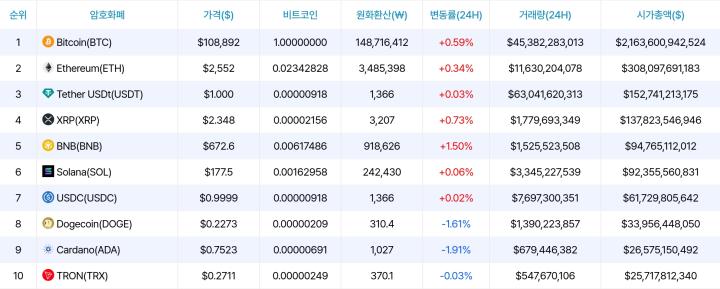Last week, the Bit price renewed its all-time high in 4 months and showed momentum soaring above $110,000. However, with the emergence of Trump-related tariff concerns, the rare strong upward trend seems to be ending quickly. As of 1 AM on the 26th, Bit has dropped back to $107,000, showing an unstable trend.
First, let's look at the scenes that appeared during the rise. The inflow from the Bit spot ETF, which pushed the Bit price from $94,000 to $105,000, played a significant role again. Although the ETF net inflow seemed to decrease slightly at the beginning of this week, it surged again as Bit showed strong price support during the US long-term bond instability. Particularly, BlackRock's IBIT and Fidelity's FBTC showed their presence.
In fact, the ETF inflow is a supply-side phenomenon and can hardly be considered a fundamental cause. Ironically, one of the main reasons for Bit's rise this week was the instability of US long-term bonds. Investment funds that fled from 'made in USA' assets such as US stocks and US bonds were concentrated in Bit and gold.
The long-term bond instability can almost be attributed to former President Trump and House Republican representatives. They tried to pass the 'Mega Bill' last week, which primarily involved massive tax cuts and welfare budget reductions.
The market anticipated that if the US federal government, already struggling with excessive debt interest, were to implement tax cuts, it would have to issue more government bonds than before. On the 22nd, the 20-year US bond auction saw interest rates soar to 5.103% due to insufficient demand. This means that long-term bond rates became unstable during the process of pre-selling bonds in anticipation of excessive bond supply in the market.
Bit Market Cap Overtakes Google and Amazon
The Bit price broke through the all-time high and the $110,000 mark in the early morning of the 22nd, setting a new high just short of $112,000. With nearly a 5% increase that day, the Bit market cap temporarily overtook Google and Amazon.
The prices of altcoins, which had been stagnant, also responded quite elastically. Ethereum (ETH), which showed a 60% surge in the past month, recorded a short-term peak by surpassing $2,700.
Solana (SOL) price also approached the $180 range for the first time in about two months since early March. TRUMP, known as the former president's official meme coin, showed a surge of over 13% ahead of a dinner meeting between the former president and coin holders.
The Stablecoin Bill (GENIUS Act), which had been stuck in the US Senate for quite some time, also passed the Senate in line with the Bit price rise. Now, if it passes the House, the stablecoin market cap is expected to explode, bringing new liquidity to the crypto industry. JP Morgan, Citibank, and other major Wall Street banks have also announced they are considering creating stablecoins together.
While some claimed that the largest altcoin season in history could be coming, the atmosphere was reversed when former President Trump announced on the 23rd that he would apply a 50% tariff to the European Union (EU) from June 1st. The Bit price dropped by 4%, and the weekend market sentiment turned to fear. According to the crypto data platform CoinGlass, over 53% of investors hold short positions betting on Bit's decline.
50% Tariff on EU - Will It Be a Negative or Positive Outcome?
The US market will be closed on the 26th (Monday, local time) for Memorial Day.
On the 27th (Tuesday), a 2-year bond auction and the Conference Board's consumer confidence index will be released. On the 28th (Wednesday), a 5-year bond auction will be held, and the Fed's May FOMC minutes will be published. On the 30th, the April Personal Consumption Expenditures (PCE) inflation rate will be announced.
Although no official announcement date has been set, US tariffs are likely to be the main source of volatility this week. If the EU announces retaliatory tariffs in response to the 50% tariff imposed last Friday, the market will again be negatively impacted.
Positive news may also stem from tariffs. US Treasury Secretary Scott Bessent said in a media interview last Friday that "there could be several major announcements next week". If news of tariff agreement settlements with India or Japan, which are already significantly progressing, is delivered, the market is expected to interpret it positively.
Statements from Fed officials have also gained slightly more importance this week. Austin Goolsbee, President of the Chicago Fed, commented that if such tariffs continue, interest rate cuts would only be possible 10-16 months later regarding the 50% EU tariff. If other Fed officials echo this sentiment, the market's current expectation of two interest rate cuts this year might diminish. We wish you all successful investments this week.






